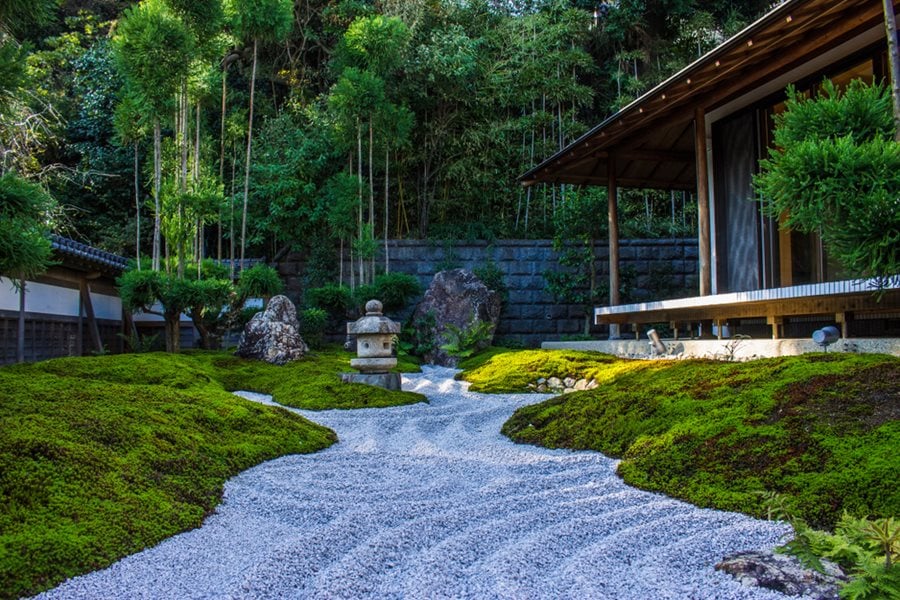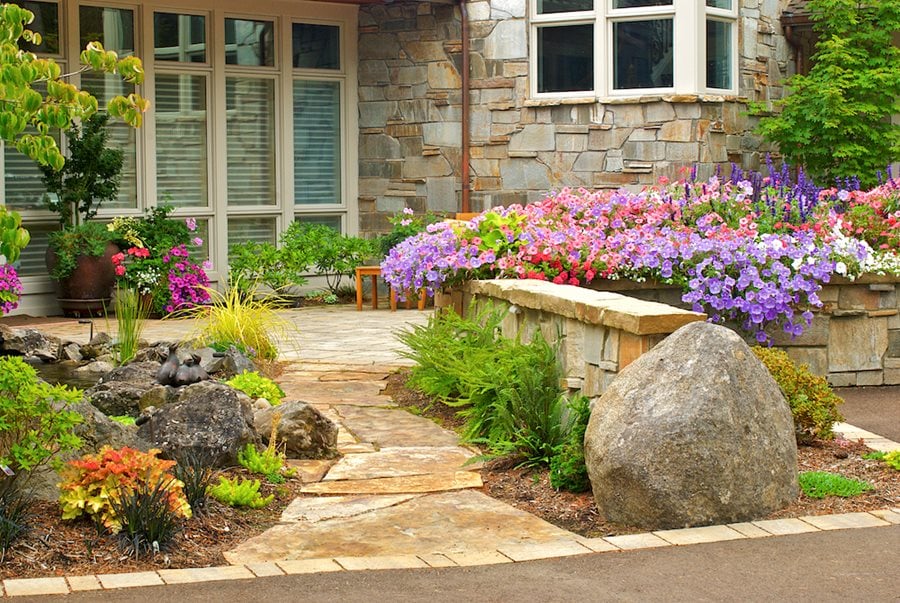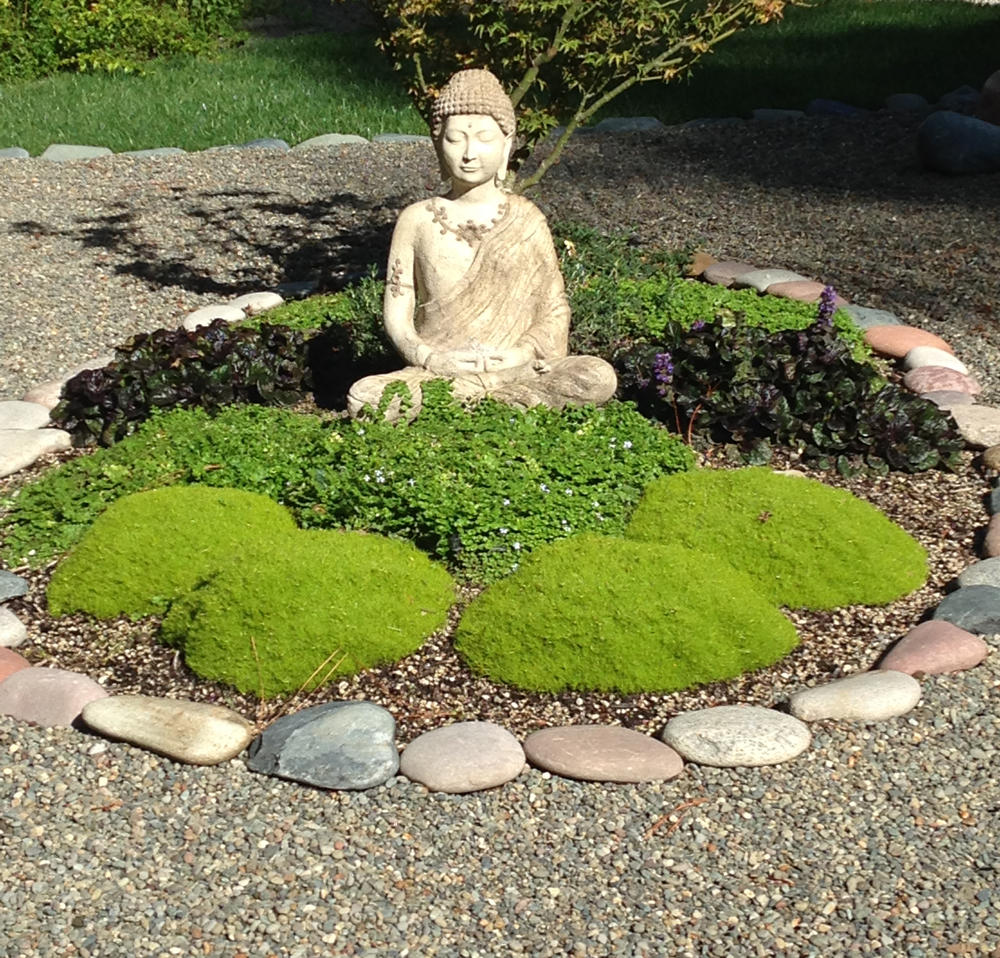Are you looking to create a meditative space in your yard? Well, a Zen garden is what you might need. Zen garden may be a bit of a misnomer. Zen is more about an approach to life, not the garden itself. On the other hand, it’s often said that gardening can be very meditative and relaxing, which is true.
It’s not hard to make a Zen garden, but there are some things you need to know to do it right. Follow these simple steps, and you’ll have your Zen garden in no time.
What is a Zen Garden?
A traditional Zen garden, known as karesansui, is a minimalist dry landscape composed of natural elements of rock, gravel, sand, and wood, with very few plants and no water. Man-made components include bridges, sanctuary, and stone lanterns, with an enclosing wall or fence to separate the space from the outside world.

Zen gardens are among the most breathtaking sights you’ll ever see. They were created in Japan to assist Zen Buddhist monks with daily meditation and introspection. Mostly, the expanse of white gravel raked to have ripples represents ocean waves, and the tall, narrow boulders jutting out vertically represent mountains.
Although you may not have the time and space to create and maintain a traditional garden Zen, you can still engage in this practice and reap the benefits of your mini Zen gardens. Many people like to keep tabletop Zen gardens on their work desks to practice mindfulness breaks during the day while others like to display them in living areas to give guests a tranquil activity.
Here is all the information you’ll need to create your mini Zen garden. It will take you a few materials and a small portion of your time. Keep reading.
Tools and Materials You’ll Need
- Mini rake
- White gravel
- Tape measure
- Hoe
- Shovel
- Edging stones
- Back brace, work gloves
- Garden rake
- Wooden Zen rake
- String level
- Wood stakes
- Stones
- Landscape fabric
- Landscape pins
- Landscape marking paint
Mini Zen Garden DIY Steps
Planning and Design
Take a look at your lawn or garden and plan out where you want to place your mini Zen garden. If you’re using an existing spot, measure the area’s dimensions. Mark a perimeter with stakes and string. The best way to design your Zen garden is to put it on paper. The majority of gardens consist of rocks and other structural elements.
Traditional zen gardens also feature a wall or some enclosure. Once you have your ideas on paper, you can determine your budget. The rocks, sand, and gravel will take up most of your budget. Labor is also expensive, so you’ll need to factor in that cost as well.
Choosing the Site
Wherever you decide to place your zen garden, make sure it gets at least six hours of sun a day, if not more. Choose a level, flat site, free of obstacles. If you plan to add plants to your garden, make sure the area receives the adequate sunlight the plants need.
If there are any trees or shrubs in the area, decide if they’ll be part of your garden or remove them. Also, remember that most of the garden’s surface area will be white gravel. Overhanging trees will drop leaves and twigs, requiring you to clean the debris more often.
Clear the Area
Remove any sticks, stones, or debris that may be present. Rake the area to remove dirt and smooth it down. It’s ideal if the surface is as level as possible, but don’t worry too much about achieving perfection because you’ll be covering most of it with gravel anyway.
Measure First Side
Zen gardens are typically rectangular, although you may choose any shape you like. Use a long hose or rope as a straight edge to determine the first side of your garden. Pick a corner and use a tape measure to mark the first side, along with a second mark parallel to it. Use a garden hose as a guide to drawing your first line if you’re not comfortable using a tape measure.
Surround a Simple Water Feature with Pebbles
The sound and sight of water are automatically soothing, which is why water feature ideas are a great addition to zen gardens. However, don’t elaborate designs surrounded by vibrant pond plants; instead, go simple. Surrounded by smooth pebbles and then bordered in fine gravel, your water feature will stand out without overwhelming the rest of your garden.

The bubbling fountain provides a focal point that can aid meditation while offering a gentle soundscape. Make sure you position somewhere to sit nearby to take in the view. Try adding a small Acer or two nearby as this will bring a touch of color to the scene, while it’s gentle swaying in the breeze will enhance the feeling of zen. If you love birds, bird birth water fountains can be a good option for you.
Choose Different Shades of Stone
There’s more than one way of achieving a Zen garden. Instead of using fine gravel, consider mixing larger stones for added texture and dimension. As part of your zen garden ideas, try positioning large stones and rocks as focal features in your plot. These will provide a sculptural element in a naturalistic way.
Opt for two tons of gravel and get creative with shapes to take things one step further. To keep things in place, surround your shapes with stone edging. You can also be creative enough by learning how to make stepping stones to make it unique and practical.
Remove Top Layer of Stones
As part of your zen garden ideas, you’ll probably want to include some plants. Arrange smaller stones in the shape of stepping stones around the base of each plant, leaving paths between for easy access when tending or watering. Once you’ve chosen your plants and assembled everything into place, complete the look by removing the top layer of stones or pebbles.
Lay Landscape Fabric and Rocks
Pour pebbles and rocks over landscaping fabric. The material will keep weeds from growing between the stones and won’t compact over time. Cover the entire base with a layer of mulch to create an appealing contrast against the dark stones.
Use the landscape pins to hold in place. Cut away the fabric where you plan to install your rocks and plants. Use a shovel to dig shallow holes for the rocks and deep holes for your plants.
Install Large Rocks and Plants
Lay the largest rocks on top of the fabric first. Plan to pack them tightly together, with no gaps between stones, for a full look. Plant larger plants in the holes beside the large rocks and add mulch around them. Remember to get help and use proper lifting techniques when moving large objects. The goal is to make stones and plants resemble natural landscapes.

Add Soothing Sound With Traditional Features
Add a fountain to increase sound. This will help the environment give the feeling of being inside a Zen garden. Small, smooth stones can be added without looking too cluttered between large rocks and plants. You can add the water feature above, known as Shishi Odoshi, traditionally seen in Japanese gardens.
They create a soothing, periodic noise, which can be appealing although it is meant to deter deer. They make a good addition to zen garden ideas, especially when surrounded by an array of flat stones and rocks.
Go for Curved Edges for Your Zen Garden Ideas
The shapes of the gravel, pebbles, and sand should curve as opposed to straight lines. Implementing a curved edge with flat stones on top creates a sense of balance and stability. A harmony will begin to form within your garden if you choose this style over sharp edges, which oftentimes appear more vacant.
Bring Color to the Scene with Acers
Acer palmatum, also known as Japanese Maples, may be a surprising addition to a zen garden ideas list. They are colorful and work well with other plants because of their small size. When they have turned from green to red or yellow during autumn months, they can oftentimes become the focal point for anyone who sees it.
Install the Edging First
Halfway through the project is not the time to go back and figure out where you want your edging. It must be set into place before any other plants or rocks are brought in. This will offer a better display for sure, but also make it easier on yourself as well. Use your string level as a guide as you install edging.

Lay the Gravel
Before adding the gravel, take a minute and look over your area. If there are sections that seem to slope or dip, this is an opportunity to fix them by adding some extra soil in problem areas. Use your shovel for this job, and make sure not to get too much added at once.
Lay two to three inches of white pea gravel. Use the hoe to spread the gravel, working your way around the perimeter of the garden. Once you have filled in all the gaps, use a broom to even out any bumps and ripples in the gravel.
Ripple Effect
The ripples in the gravel add a nice accent to the garden, so place the larger rocks in the center of each ripple. Place smaller rocks and decorations along the outer edge of each ripple for a “halo” effect. The wooden zen rake makes ripples in the gravel around the rocks and plants to resemble streams.
How to Maintain a Zen Garden
A zen garden might be the perfect option for your home if you maintain it well. Despite its authentic look, the zen garden requires regular maintenance to look its best. These caring tips include:
Rake Gravel
Once a week, use the wooden zen rake to straighten up loose gravel. This will help keep patterns crisp and the gravel looking fresh.
Pick up Leaves & Debris
Once a month, sweep away any leaves and debris from the garden. Rinse the Wooden Zen Rake with a hose if it becomes dirty while cleaning.
Weed Garden
Once per month, remove any weeds popping up in the garden. To do this, carefully pull the weed by hand to avoid damaging plants.
Prune
Keep plants pruned to maintain a neat look. Shrubs can be kept sheared or shaped into topiaries. Cut out dead branches or growth as needed, and remove spent flowers. Trim creeping groundcovers away from gravel areas.
FAQs on How to Make a Zen Garden
What are you supposed to do with a zen garden?
The zen garden is a tool to help relax your mind and body. These gardens evoke calm, tranquility, and peace by using sand, rocks, pebbles, and sometimes plants, water, or bridges.
What are the three characteristics of zen Buddhism?
The characteristics are experimental, it’s beyond words, and it’s beyond logical thinking.
Final Thought on How to Make a Zen Garden
As you can see, making a zen garden isn’t that difficult. However, it can be time-consuming, especially if you have to clear a wooded area or lack a flat, level spot. Leveling and laying the rocks and gravel is the challenging part of the zen garden installation. So, consider letting a professional install the garden for you.
The post How to Make a Zen Garden appeared first on Kitchen Infinity.
kitcheninfinity.com










